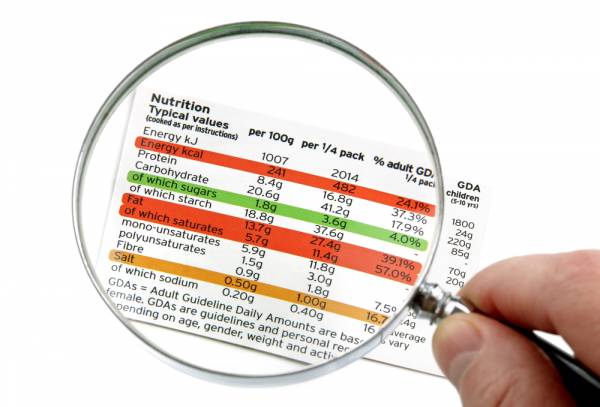The current U.S. government guidelines continue to tell us to eat less and exercise more. This has been the advice since the early 1990s when the Food Pyramid became the standard for the United States. But over two decades later, we are even worse off than we were before.
This has led to social media and media outlets blaming the obesity epidemic on carbohydrates. A couple months ago, even Time magazine published an article blaming carbs for the current obesity problem. But carbs, and even calories, are not to blame. Rather, the problem is in our choices of foods and the root of this problem goes right back to the USDA’s guidelines.
The USDA Approach Is Not Working
The majority of us reach for foods that are highly palatable and easy to overeat. Some of these foods are breads and pastas. Foods that are also listed by the United States Department of Agriculture as the base of the Food Pyramid, now referred to as MyPlate.
If you go onto Choose MyPlate, you will find a tab that is labeled Healthy Eating Tips. This tab explains that we need to get all the servings of foods in each category and keep our calories limited. (Exact calories needed can be determined through the USDA’s SuperTracker.) The MyPlate site also explains that a slice of pizza counts towards servings in multiple food-group categories. Click here for their examples of foods listed under Healthy Eating Tips.

Excerpt of the Mixed Dishes guide from Choose MyPlate.
The USDA began giving out these guidelines in 1992. From the current state of the country, I think we can draw a conclusion that this approach is not working and may actually be a part of the problem. For those of you who truly believe this is the way to go, I encourage you to eat foods on that list within your caloric range and see what happens. Even if your weight is maintained, I am willing to bet there will be some nutritional deficiencies that lead to negative health consequences at some point. I wish I was wrong because, believe me, I would love to eat pizza and lasagna as staple foods in my diet, too.
More Nutrients, Not Fewer Calories
Nowhere on the USDA’s list are micronutrients even mentioned. I guess we can just take a multivitamin on a day-to-day basis and be okay? The research is contradictory as to whether multivitamins are even beneficial. There may also be relationships between food and the human body that we do not even know yet. We continue to learn more and more about gut bacteria and its interactions with food. We are also uncovering more information about the epigenetic gene expression caused by foods.
Would we be leaner and have more optimal health if we chose a sweet potato with butter and salmon over the pizza? I do not think anyone in his or her right mind would argue that pizza would be a better option for health reasons. We all know fruits and vegetables are healthier than grains. I encourage anyone with different data stating the opposite to please share.
So, if this is the case why do fruits and vegetables not make up the base of the pyramid? They are more nutrient dense and contain fewer calories. Wouldn’t this be a better way to cut calories out of our diets than becoming neurotic through weighing, measuring, and looking up the calorie content of every food?

If we arranged the government standards in order of foods with the most nutrients per calorie, wouldn’t we be better off? Especially knowing that nutrient deficiencies drive hunger, as does cutting calories. With this approach, we could eat until we were full and we would be making sure all of our nutrient needs would be met, which could increase our mood and energy, which could then in turn increase our physical activity level.
The Overeating Problem
Overeating is a problem and counting calories is not fixing it. Why? For one, calorie intake estimates are nothing more than a guess. When you go with a ballpark number you are bound to get mixed results. Also, we do not burn calories the same way. Everyone is different. This is why studies constantly show different calories burned at rest in similar groups fed the same diets.
This calorie equation also does not address the types of foods we are eating. Protein is much harder to store as fat than sugar and fat. This is ironic, because we are told to limit protein intake due to a fear of animal products causing heart disease. The research is pretty clear that saturated fat is not a cause of heart disease, but even if we say it is debatable, there’s no question that being overweight definitely leads to an increase in heart disease.
Also, foods such as pizza, lasagna, and breads are addictive. They are easy to overeat without even realizing it. Broccoli? Not so much.

The Obesity Solution
Obesity is a risk factor for all of the chronic diseases plaguing our population from heart disease to cancer to diabetes, and even to diseases such as Alzheimer’s. Wouldn’t it be safe to say that if we changed the dietary guidelines, educated the public, and lowered the obesity numbers that other diseases of Western society would fall as well? I think this is a safe assumption.
Before you try to kill yourself at the gym every day and spend hours counting calories, instead try focusing on more nutrient-dense foods. Eat large amounts of vegetables, fruits, and quality protein sources. Your waistline and your health will thank you for it in the end.
References:
1. USDA. Choose MyPlate. Last accessed October 12th, 2014.
2. USDA. SuperTracker. Last accessed October 12th, 2014.
Photos courtesy of Shutterstock.






